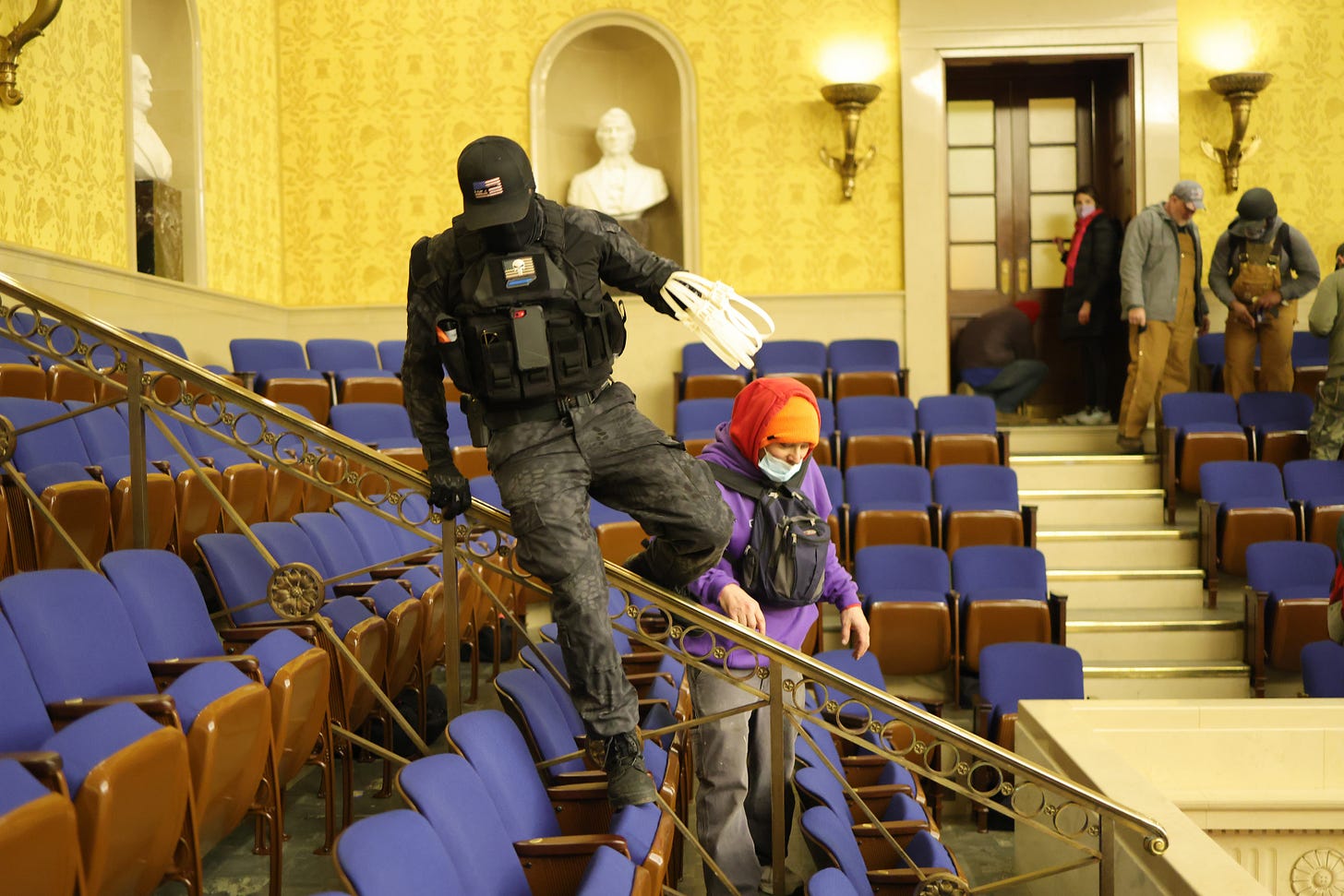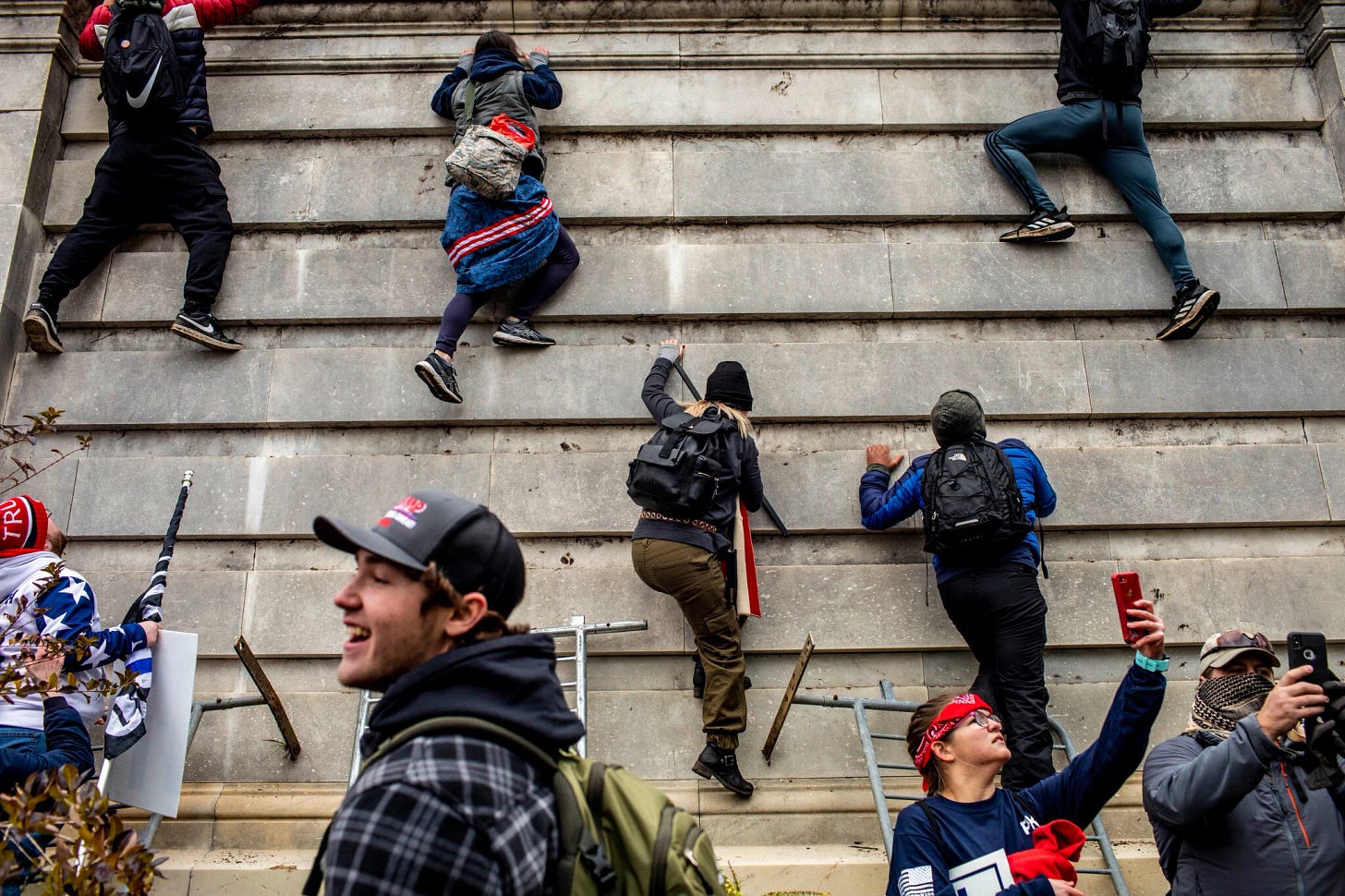Fascist Fashion, Then and Now
The sartorial signifiers of right-wing street thugs have changed, but their tactics haven't — and nor have their leaders'.
German Federal Archive via Wikipedia
History repeats itself, but never the same way twice. And by the time the rerun arrives, the original iteration looks dated enough to be dismissed as irrelevant. Look at the friendly brownshirts and their silly baggy pants! Watch the crowd wave — er, salute — as the marchers pass by! Everybody loves a parade, and this 1929 watercolor tint is almost charming; the peek-a-boo Nazi flags, not so much.
But as alien as the Brownshirts, founded c. 1919, might seem today, they were just one of a rainbow of fascist street terrorists that included such contemporaries as Italy’s Blackshirts as well as the Blueshirts (Ireland), Greyshirts (South Africa) and Gold Shirts (Mexico). The American fascist Silver Shirts came a bit later later—1933—but, in fact, the US may have originated the right-wing colored shirt meme, as white supremacist terrorists known as Redshirts date to 1875.
North Carolina State Archives via Wikipedia
They don’t look so scary in black & white, but a telling detail accompanies the archival record: they’re lounging outside an 1898 polling place; some are wearing buttons with white supremacy slogans; and some, like the fellow third from right, are armed. The group was dedicated to violent voter suppression and overturning the rule of law in the post-Civil War South during Reconstruction and beyond, even if they aren’t as well-known today as the white-sheeted Klan.
If old black & whites don’t bring it home, here’s a red shirt that survived to present day:
Radiofan / North Carolina Museum of History via Wikipedia
It looks natty enough to wear off the rack, but today, colored shirts are less in vogue, and fascist street thugs favor SWAT uniforms …
Win McNamee / Getty
… or MAGA hats …
Win McNamee / Getty
… or freestyle t-shirts:
The logos tell the story: “6MWE” stands for “Six million wasn’t enough,” the Proud Boys are an antisemitic hate group, and “Camp Auschwitz” is self-explanatory. Furs, however, have a more murky, shamanistic significance, especially when worn bare-chested at the Capitol:
Erin Schaff/The New York Times
Other Capitol rioters wore sporty casual:
Jason Andrew for The New York Times
The wall-climbers may grab your attention, but look for a moment at the fresh-faced boy next door who seems to be having a riotous time. He looks as happy as the Brownshirt at the head of the parade in the 1929 watercolor tint. What a rush! Just a bunch of folks having fun dismantling democracy. As Monica Hesse writes in the Washington Post, it’s a “whole taxonomy of Trumpist right-wing manhood.”
But what of the Brownshirts’ leader? While Hitler was seemingly always in uniform, he also apparently had a taste for expensive suits:
An American fascist leader opts instead for a foreboding black suit:
Updated clothing and more vibrant images, sure, but is there otherwise much difference between Hitler and Trump? True, the former was expansionist, the latter not; the former incinerated the Jews while the latter may leave the anti-Semitic t-shirts to his followers.
But after five years of one lie after another; unrelenting cruelty and incessant bigotry; subjugation of the Republican Party into a cult of personality with an oath to the ruler (“This is Donald Trump's Republican Party,” crowed Don Jr. on Wednesday); a Praetorian Guard comprised of anonymized federal agents; and months of ceaseless attempts to subvert the election via the “big lie,” cajoling and bullying, culminating with inciting an armed insurrection — after all that, what more do you need to understand what Trumpism is?
History repeats itself, even if not the same way twice. Could a fascist dictatorship establish itself in the US? It almost did, as many of us foretold four years ago; Trump wasn’t subtle. Others waited, cravenly enabled, and baselessly reassured the populace that party elites could control the menace they helped unleash — much as powerful Germans did when the nascent Nazi dictator had just been elected.
“When he laughed, respectable senators burst with laughter,” wrote W. H. Auden of Hitler. That toadying didn’t end well. Indeed, Auden’s poem — Epitaph on a Tyrant — is worth quoting in full, so chilling are the parallels:
Perfection, of a kind, was what he was after,
And the poetry he invented was easy to understand;
He knew human folly like the back of his hand,
And was greatly interested in armies and fleets;
When he laughed, respectable senators burst with laughter,
And when he cried the little children died in the streets.
We were lucky this time, but now that Trump has blazed the trail—and even signposted his mistakes—will we be as fortunate the next?














